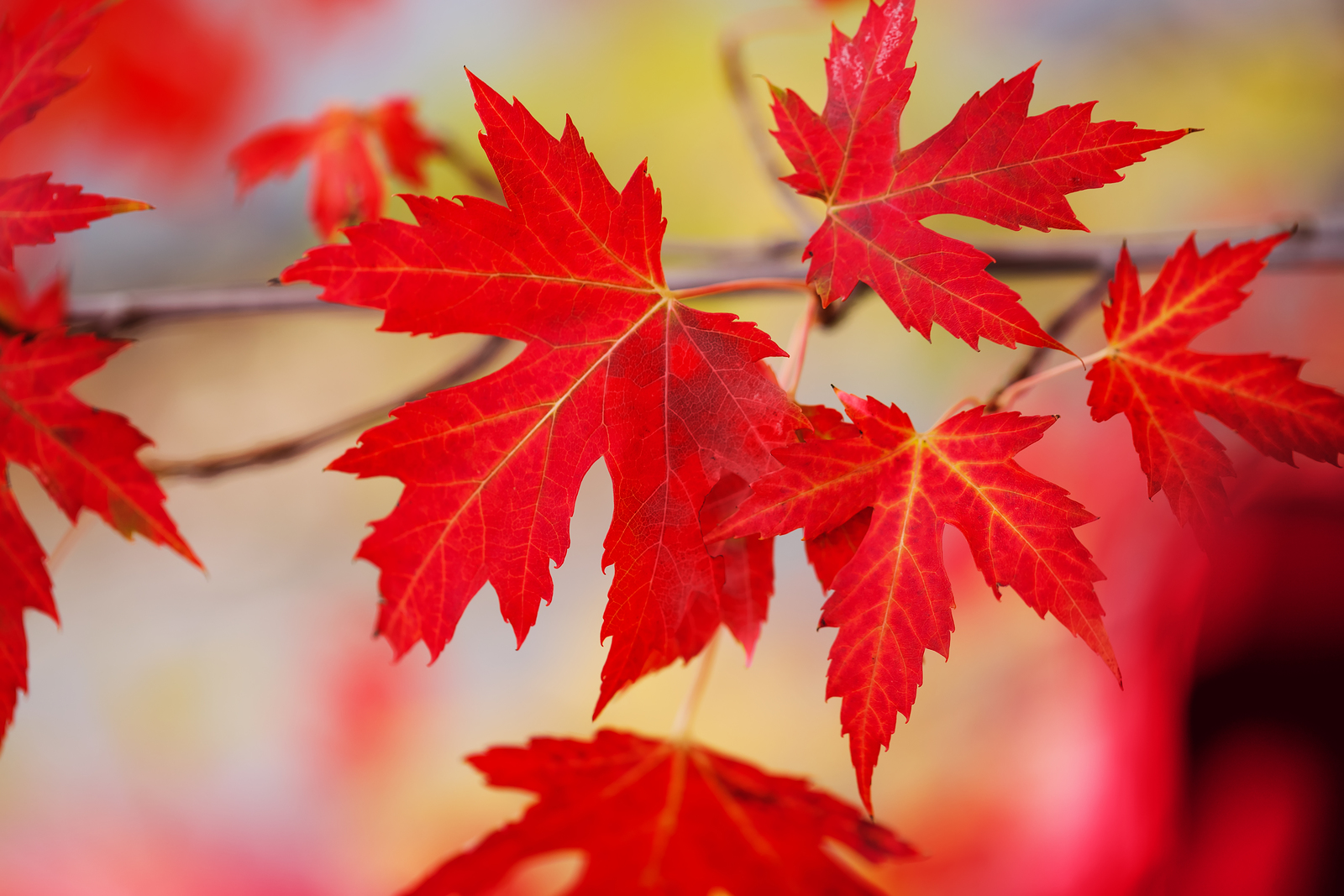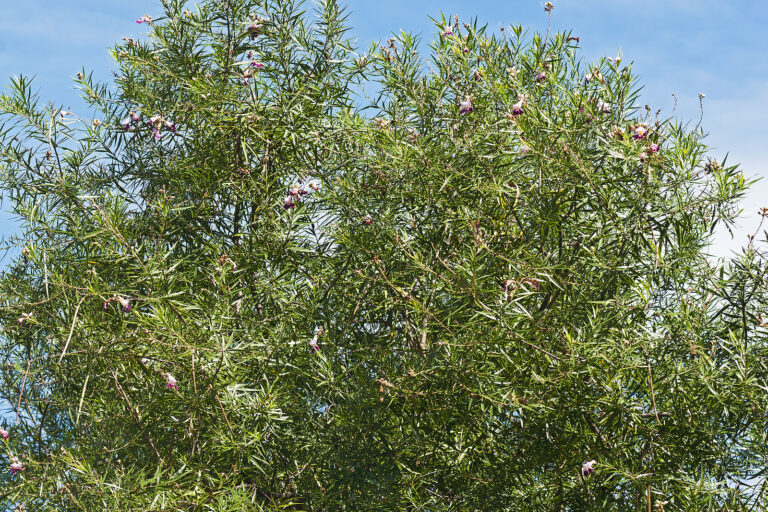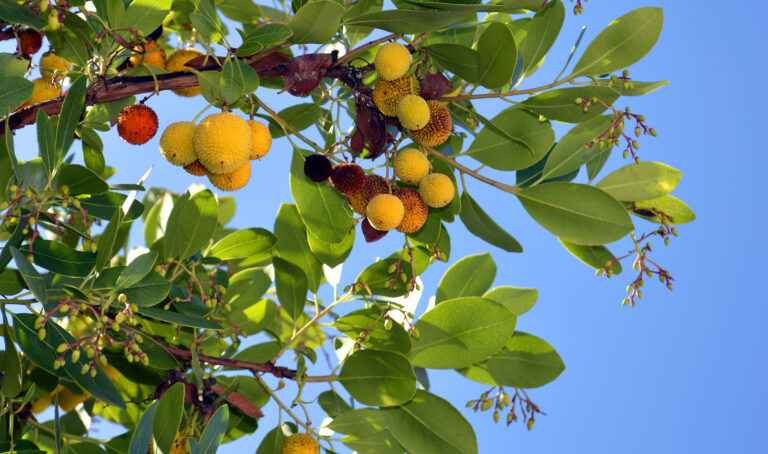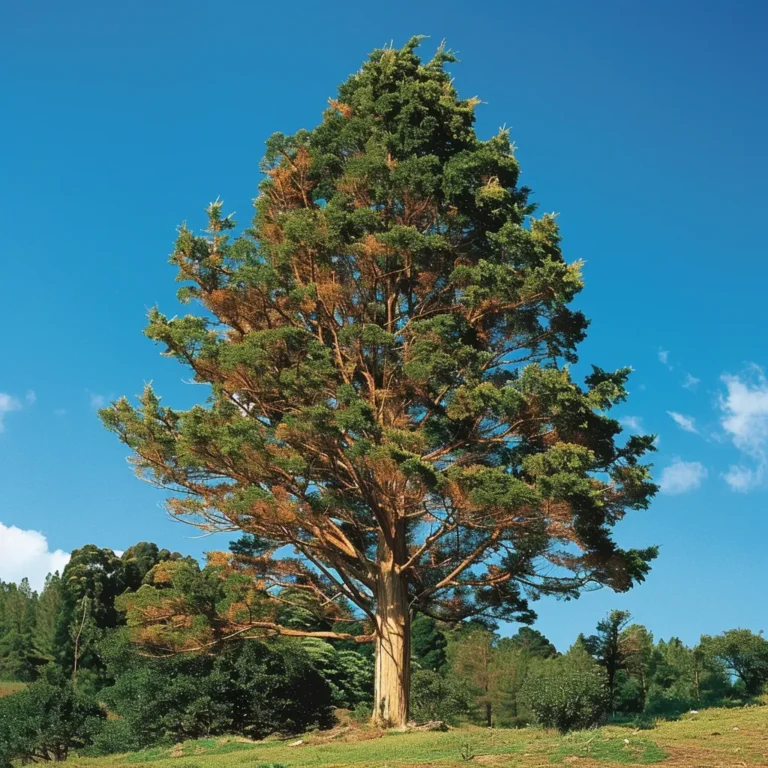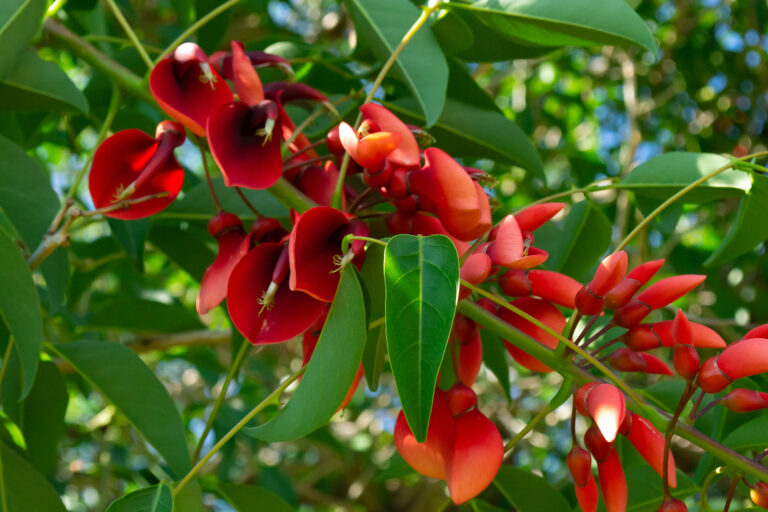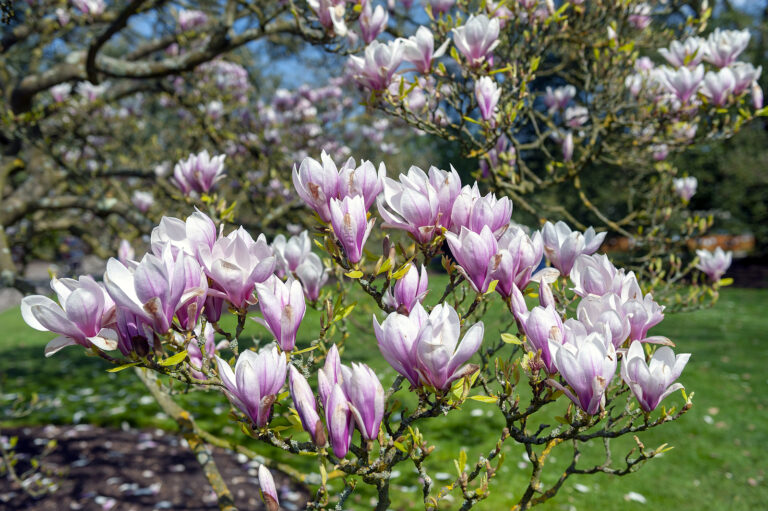How to Grow Maple – Acer
Maples come in a wide range of heights. All have spectacular colors in autumn. Choose a maple that is suitable for your regions. Also, be sure to choose a tree that is suitable for the exact location—some are shallow-rooted and could disturb sidewalks or paving. Most grow in full sun, but some small cultivars prefer partial shade.
Maple is the common name for the handsome, deciduous, usually long-lived trees of the genus Acer. Maples have opposite, often lobed, leaves, and bear clusters of small flowers, followed by two-winged fruits called samaras or keys.
Nearly all maples are hardy in cold-winter regions. Many are attractive street, lawn, and specimen trees. Most maples are indifferent to the soil but silver and red maples require considerable moisture and even do well in swampy situations.
The Sugar Maple is valued for its sap and timber as well as for its shade and ornaments; it is one of the most beautiful and symmetrical of trees.
The Red Maple is a good tree for yard or street; it is beautiful year-round but especially in early spring when covered with vivid red flowers and hung with brilliant red winged seeds. In fall it has brilliant crimson foliage.
The Ash-leaved Maple and Silver Maple are both rapid growers but can have brittle limbs.
Japanese Maples are very decorative dwarf trees for lawns. It is almost circular in outline, usually not more than 20 feet tall. Of the Japanese maples, Acer palmatum, the variety atropurpureum has purple leaves, dissectum has finely cut leaves, and sanguineum and rubrum have brilliant ted foliage from the moment it unfold in spring.
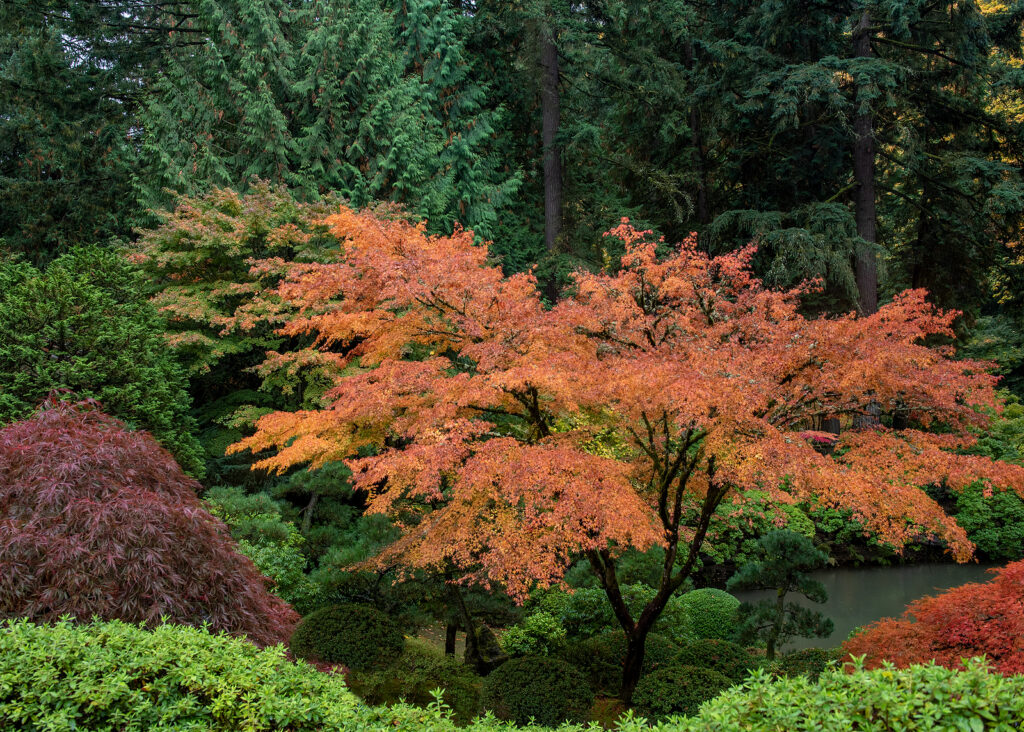
Get to know Maple
- Plant type: Deciduous tree, several species, and cultivars
- Growing Zones and range: Zoes 2 to 9 depending on the variety
- Hardiness: Cold hardy
- Height and width: 15 to 40 feet tall (4.5-12m) or taller in some varieties, 15 to 40 feet wide depending on the variety
- Foliage: Opposite leaves are usually shallowly or deeply palmately lobed; a few species are unlobed.
- Flowers: Small often greenish-yellow flowers in mid-spring; winged fruits joined in pairs
- Uses: Specimen tree, shade tree, street tree
- Common name: Maple
- Botanical name: Acer spp.
- Family: Aceraceae
- Origin: Europe, Asia, North, and Central America
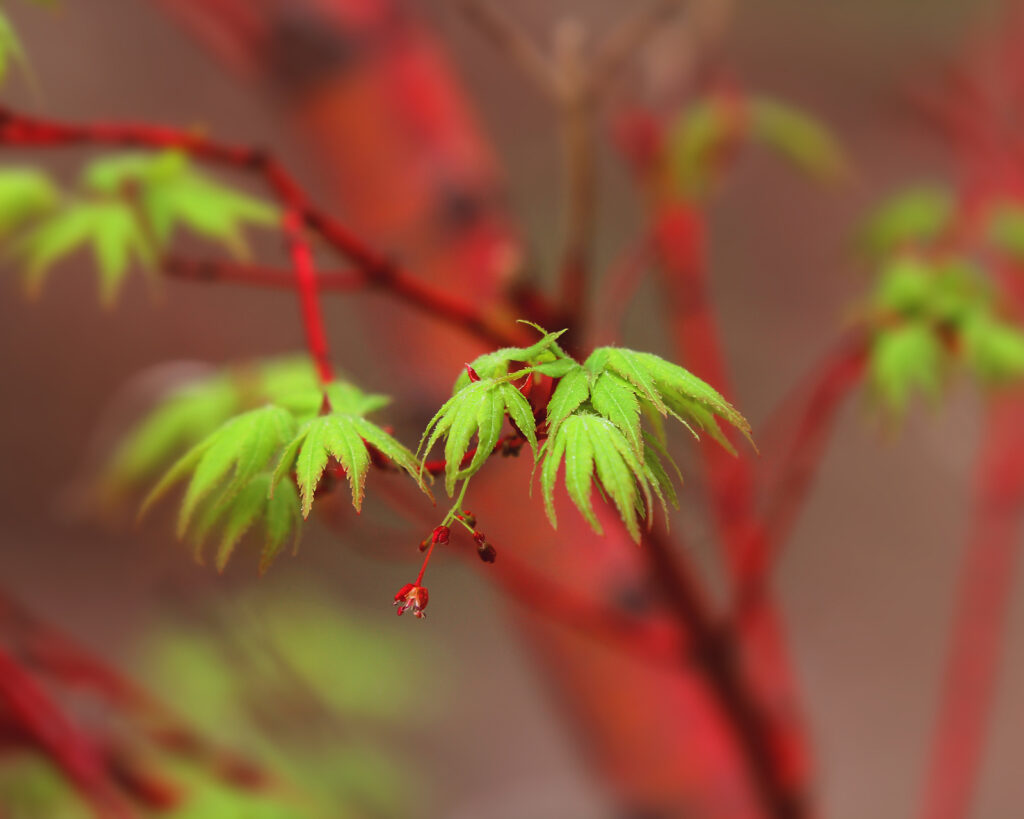
Where to plant Maple
- Grow most maples in full sun. Some Japanese maple cultivars need partial shade.
- Maples grow best in humus-rich soil; most will grow in average to poor soil.
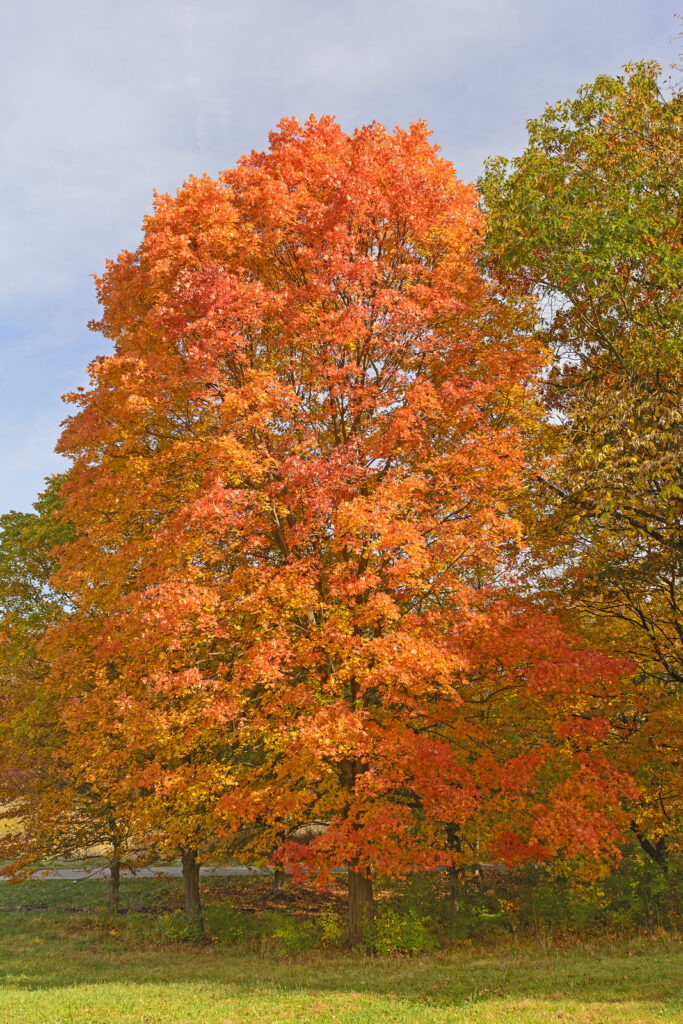
When to plant Maple
- Transplant bareroot, container-grown, or balled-and-burlapped plant in spring.
Planting and spacing Maple
- Space maples according to their spread at maturity, 15 to 40 feet depending on the variety.

How to water and feed Maple
- Water maples deeply; roots will follow water deep into the soil.
- Fertilize maples by spreading aged compost around the tree to the dripline each year.
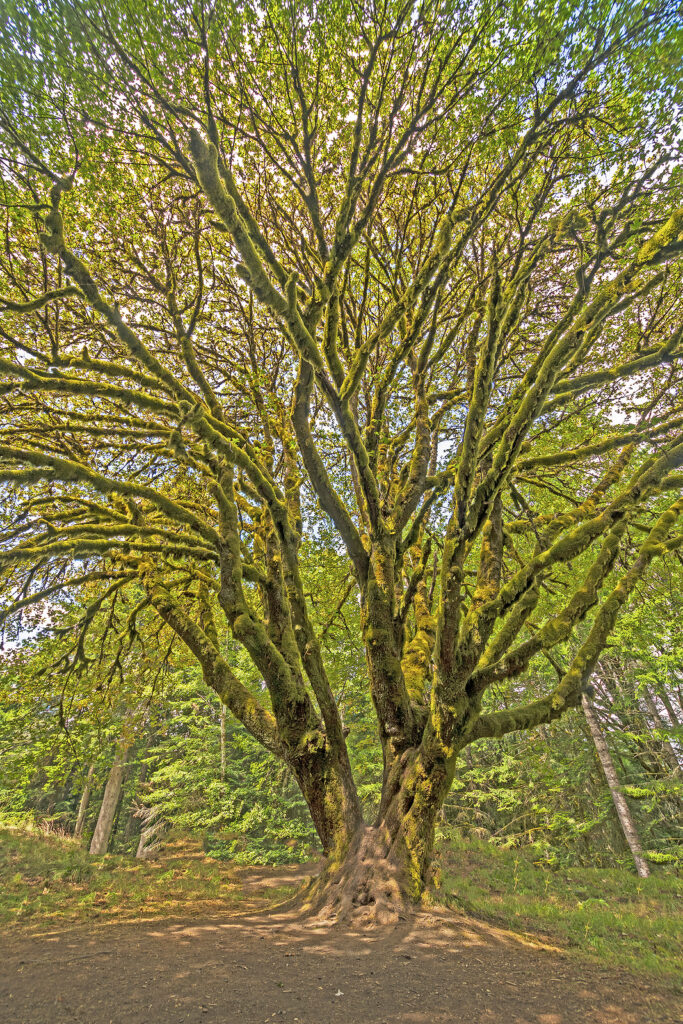
Maple care
- Prune in winter to shape the tree when it is young.
Maple common problems
- Many maple species have shallow roots, spreading roots that make growing other plants nearby difficult.
- Wounds or damage to the bark can be entry points for pests and diseases.
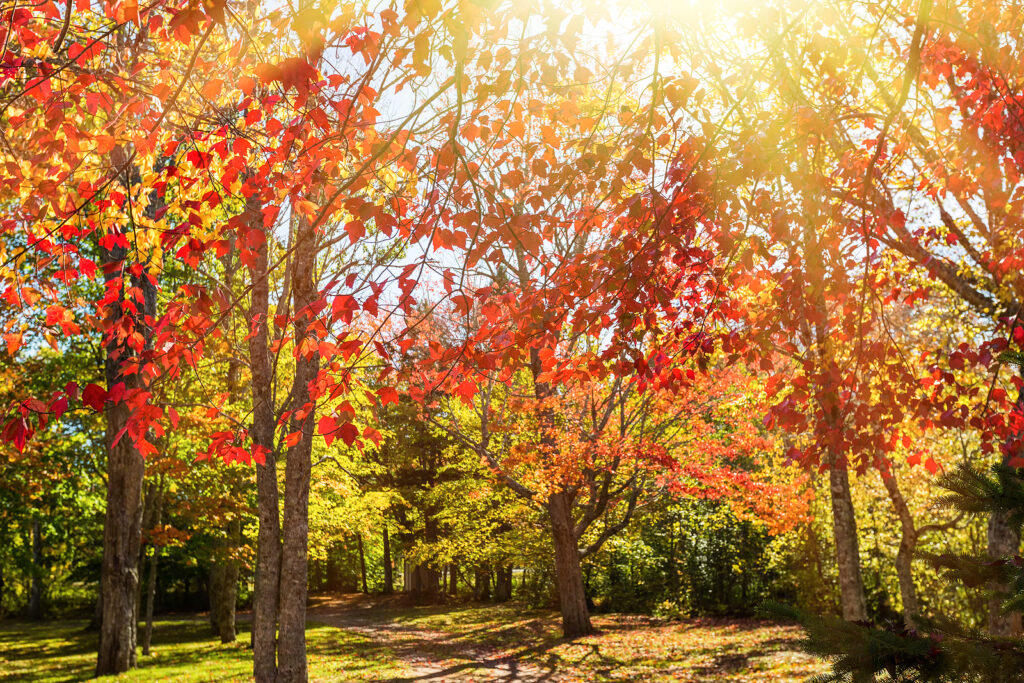
Maple propagation
- Sow seed in fall or spring.
- Take cuttings in late spring or winter.
- Graft in late winter or early spring.
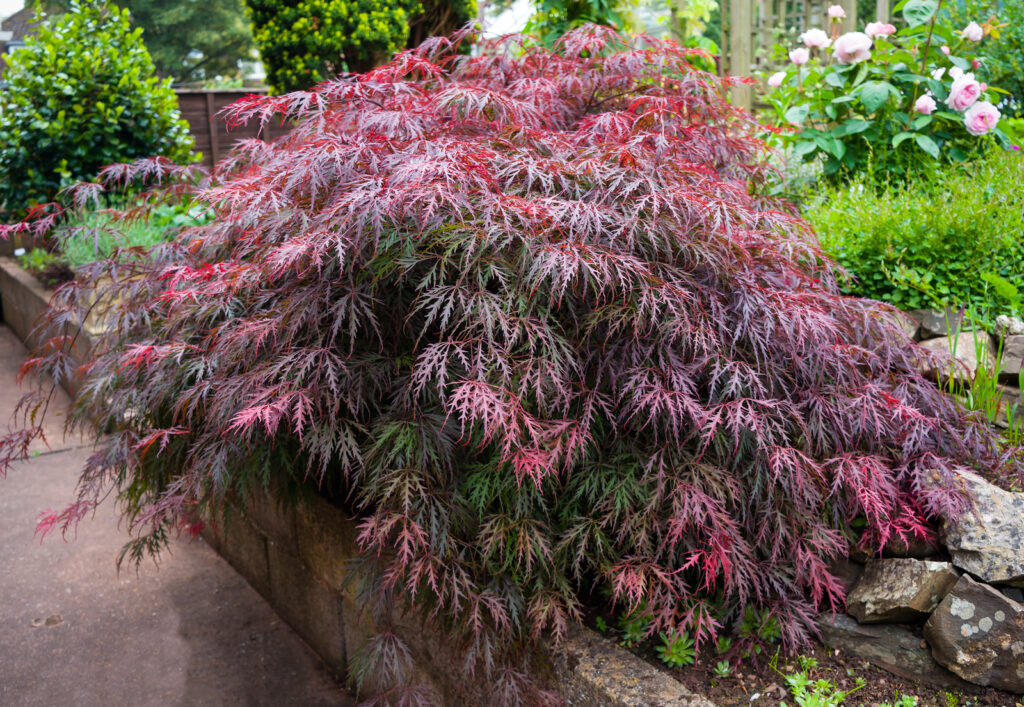
Maple varieties to grow
- Amur maple, Acer ginnala; Zones 2-6; to 18 feet (5.4m) tall and 20 feet (6m) wide; single or multi-stemmed rounded tree; bright red or yellow leaves in fall; best in full sun.
- Bigleaf maple, Acer macrophyllum: Grows 30 to 90 feet (9-27m) tall with 6o to 15 inch wide leaves; green leaves turn bright yellow to orange in fall.
- Black maple, Acer nigrum: Similar to sugar maple but more heat resistant and drought tolerant; light green leaves turn yellow in fall; cultivar ‘Greencolumn’ can reach 65 feet (20m).
- Coliseum maple, Acer cappadocicum: Grows to 35 feet 10.6m), compact, rounded crown; bright red spring foliage turned dark green.
- David’s maple, Acer davidii: Grows to 25 feet (7.6m); shiny green striped with silvery-white bark is striking in winter; glossy green leaves turn bronze to yellow and red-orange in autumn.
- Fullmoon maple, Acer japonicum: Shrub or small tree to 30 feet (9m) tall, nearly round; cultivar ‘Aconitifolium’ has deeply cut leaves; cultivar ‘Aureum’.
- Hedge maple, Acer campestre: Grows to 30 feet (9m); usually rounded, dense habit; dull green leaves turn yellow in autumn.
- Japanese maple, Acer palmatum: Zones 5-9; to 15 feet (4.5m) tall and slightly wider; a small rounded tree with picturesque branching; leaves may be lobed or finely dissected and vary with color with the cultivar; purple flowers; some cultivars need light shade, others can take full sun. Numerous cultivars include ‘Atropurpureum’ with purplish bronze leaves; ‘Bloodgood’ with deep red leaves; ‘Bonfire’ with twisted trunk and orange-pink spring and fall leaves; ‘Burgundy Lace’ has deeply cut purple leaves; ‘Crimson Queen’ shrubby plant with finely cut reddish leaves turn scarlet in fall; ‘Dissectum’ finely divided leaves turn gold in autumn; ‘Dissectium Atropurpureum’ finely divided purple-tinged leaves turn crimson in fall; ‘Garnet’ similar to ‘Crimson Queen’; ‘Oshi Beni’ similar to ‘Atropurpureum’ with arching branches; ‘Sango Kaku’ coral bark maple with coral red branches and fall yellow leaves.
- Norway maple, Acer platanoides: Zones 3-7; to 90 feet (27m) tall and 60 feet (18m) wide; a large round-headed tree with large, five-lobed leaves that turn bright yellow in fall; several cultivars include ‘Crimson King’ has red leaves throughout the season, yellow flowers, suitable street tree.
- Paperback maple, Acer griseum: Zones 5-8; to 12 feet (3.6m) tall and 15 feet (4.5m) wide; compound leaves and grow to wide-spreading round form; its cinnamon-brown bark peels in long strips providing year-round color; yellow-green flowers.
- Red maple, Acer rubrum; Zones 3-7; to 100 feet (30m) tall and nearly as wide; native to eastern and central North America; large, broadly columnar tree; three- to five-lobed leaves turn brilliant scarlet in fall; tolerates poor drainage; red flowers; suitable street tree; several named cultivars.
- Sycamore maple, Acer pseudoplatanus: Grows to 40 feet (12m); prominently-veined green leaves.
- Silver maple, Acer saccharinum; to 70 feet (21m) tall and 50 feet 18m) wide; silvery-backed leaves turn yellow in autumn; rapid grower—limbs can be weak during storms; keep away from paving; grow in all soils; ‘Silver Queen’ bears fewer seeds; ‘Skinneri’ has stronger wood.
- Sugar maple, Acer saccharum: Zones 3-7; to 100 feet (30m)tall and 70 feet (21m) wide; native to eastern North America; oval and rounded shape; leaves are three- to five-lobed and turn yellow, orange, and, scarlet in fall; greenish-yellow flowers.
- Tatarian maple, Acer tataricum: Shrub or small tree similar to Amur maple.
- Trident maple, Acer buergerianum: Zones 4-8; 20 to 30 feet (6-9m) tall and wide; small graceful form; glossy green leaves turn orange in fall; can plant near street or patio.
- Vine maple, Acer circinatum: Small shrub or tree to about 25 feet (7.6m); crooked, almost vinelike habit in the open becomes symmetrical and upright; reddish-purple spring flowers followed by red-winged seeds.

